Welcome to the Wildest Sport Ever Invented by a Soft Drink
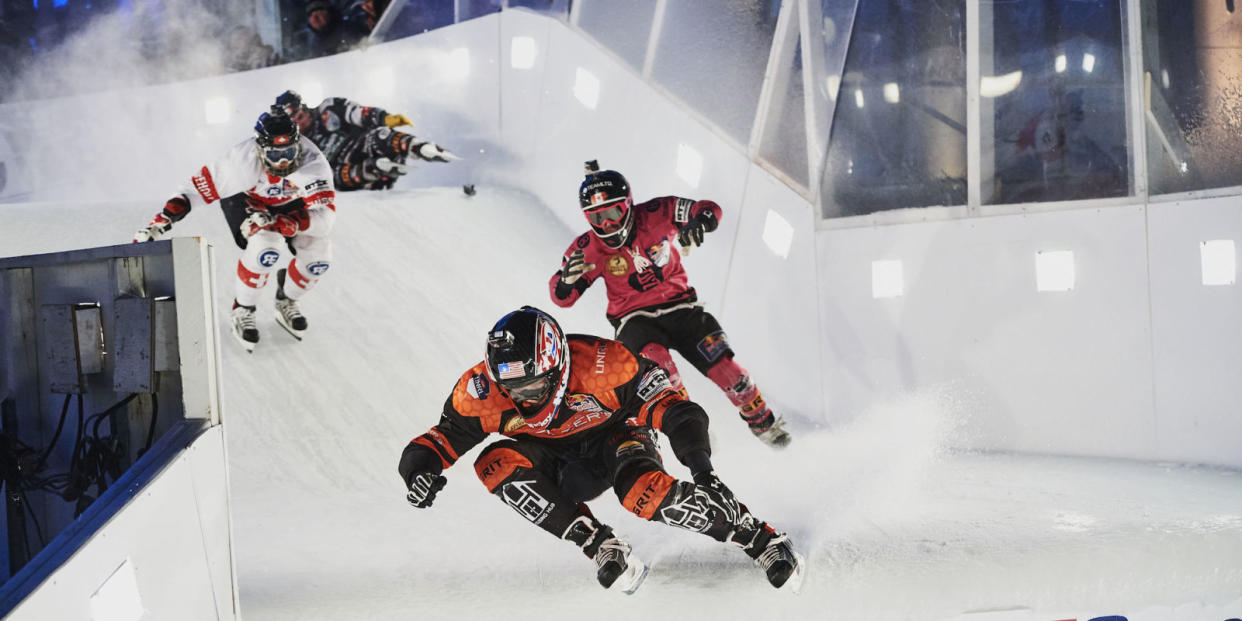
The four skaters stand poised at the starting gates, fidgeting with their gauntlets as the crowd counts down from ten. The blasting music-mostly dance remixes of pop songs and Linkin Park-inspired rocktronica-that provided the soundtrack to previous heats and half of downtown Ottawa is gone. After all, the championship is on the line.
The countdown ends, replaced with another countdown. "Five second warning!" comes the voice over the speakers, and the athletes tense up visibly.
Suddenly, the gates fly open and the skaters push off in the unlikely direction of down. It's the Men's Final in the 2017 Red Bull Crashed Ice season, the young competition for a thoroughly unlikely sport that's part speed skating, part puck-less hockey, part downhill skiing, and many parts marketing gimmick.
The crowd is packed alongside the rolling hills of the 300-meter track nestled between Canada's stately parliament building and the luxurious, 105-year-old Chateau Laurier hotel. Thousands, including Canadian Prime Minister Justin Trudeau, are braving a March cold that's uncharacteristic even for Canada-the type where the tuques and the scarves come out for survival purposes and the frost sets an ache in your gums. The crowd spills out onto Rideau St., where those who haven't pushed for a better view watch via two big-screen monitors.
Within seconds of dropping into the first icy valley, the four skaters are all bunched up. They hit the first turn. American Cameron Naasz holds a slight lead over Canadian rival Scott Croxall. Suddenly, Croxall's skate snags an edge, and he's sent tumbling into the boards, nearly taking out his countryman Dean Moriarty and the Swiss Jim De Paoli. He picks himself up, but the pack has already pulled way ahead.
Crashed Ice (or ice cross downhill, as it's formally known) is insane-and insanely dangerous. It's now a bona fide sport-albeit one almost wholly owned by an energy drink company-that requires bona fide athletes. Competitors can reach speeds of up to 50 miles per hour as they navigate the sharp turns, and your quads burn just watching them power up the steep hills and then stick the landing as gracefully as any figure skater as they go flying off the other side.
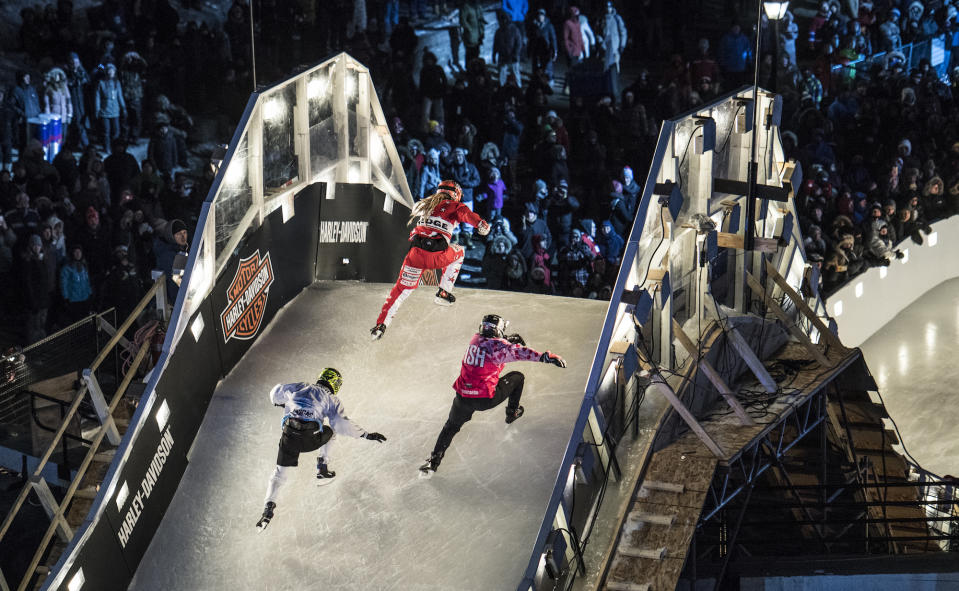
Like NASCAR, things happen so fast you can only catch a glimpse as the skaters zoom by any point along the track. And like NASCAR, the crashes are a major draw. During time trials the day before the final, Jack Schram, an Austin, Texas, native who decided to try out for Crashed after seeing the competition on TV, recalled the time he broke his back during a race.
"I didn't realize it at the time," he said. "I just took a really big spill. Some medics came out on the ice to take me off it-I guess it was a crowd pleaser. But I pushed them off me and finished the race. I didn't know until the next morning, after I went out to the after-party and partied all night."
They come from all over the U.S. and Canada, as well as European outposts including France, Finland, the Czech Republic, and Russia. The races have gone international, too: This past season saw events in North America, France, and Finland. Most skaters come from the rough-and-tumble world of lower-level hockey, while fewer have a background in motocross or BMX racing and are looking for a winter sport that offers the same adrenaline kick. Some, like repeat women's champion Jacqueline Legere, have a background even farther afield: She has worked as a stuntwoman in films like Suicide Squad.
"I just took a really big spill. Some medics came out on the ice to take me off it-I guess it was a crowd pleaser."
They're attracted to the sport's extreme element, and the notion they can make a few bucks outside a day job or school. After all, a race winner can earn more than $3,500.
With Croxall no longer a threat, the American Naasz cruises through the rest of the course's wicked twists and sheer drops. At one point, he falls to his stomach on an incline and body surfs for a moment but quickly regains his feet. Moriarty and De Paoli aren't far behind as he crosses the finish line, but Naasz is the clear winner. He's swarmed by other skaters, who immediately shower him in what is either beer or, more likely, highly-caffeinated energy drink. He is Crashed Ice's first ever two-time season champion, and he's done it back to back.
The crowd goes wild for the St. Cloud, Minnesota, native whose name almost none of them had known before today. Like everyone else who took to the track over the last few days, he risks life and limb for the sheer thrill of it-and, ultimately, for the greater glory of Red Bull.
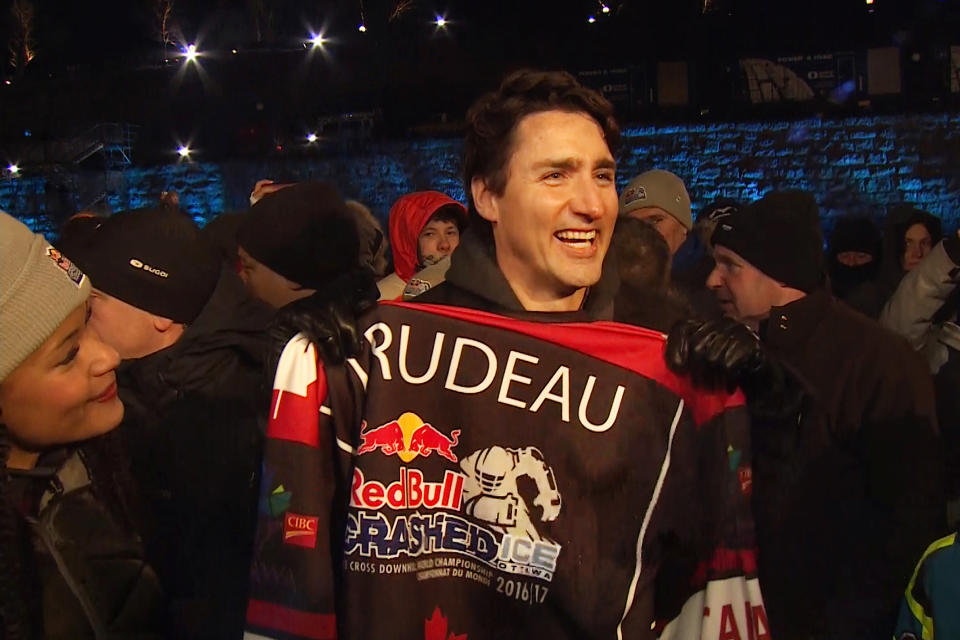
Races are unrepentant in their marketing for the company. Attractive young women with backpacks in the shape of the beverage's cans hand out free samples throughout the event. The crimson bovine logo is ubiquitous. (Crashed Ice officials declined to comment on the event's relationship to Red Bull's formidable marketing apparatus.)
However they might feel about the commercial element, racers certainly don't do it for the fame. In the crowd, friends and family of hometown racer Daniel Guolla hold signs proclaiming him number one on the ice, as well as in their hearts. For his brother, Nick, it's a thrill to see him skate in person, but he's under no illusions about his sibling's budding stardom.
"Probably not, to be honest," he says, when asked if his brother has fans. "[But] when I mention his sport, people actually know what it is and are impressed that he's an athlete on the world tour."
Red Bull has sunk its teeth into sports culture-particularly the extreme variety. The company owns or sponsors teams in car racing, soccer, basketball, and tons of X Games fodder, like motocross. But ice cross downhill is a different proposition in that, for all intents and purposes, the company owns the sport.
In the early 2000s, two Austrian Red Bull executives, inspired by downhill inline skating races, came up with the idea of holding a downhill ice skating competition. After experimenting with the idea on bobsled tracks, the first Red Bull Crashed Ice race was held in 2001 in a Stockholm fish market as a one-off promotional stunt. Athletes from downhill skiing, hockey leagues, and bandy-a sport that resembles a combination of ice hockey, field hockey, and soccer-were recruited to take part in the inaugural event.
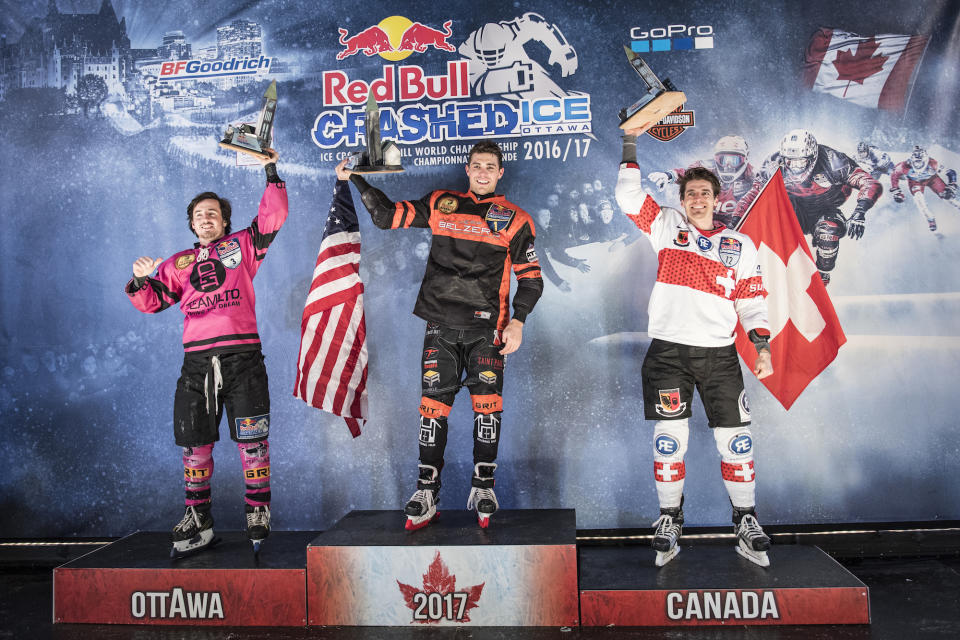
"You can imagine it was nothing compared to the elevation and obstacles we have now on the track," says former Crashed Ice skater Christian Papillon, who now serves as the league's sports director. "The guys showed up, they all travelled from Europe, they showed up in Stockholm and said 'We're not going down this thing. It's crazy.'"
More individual races followed, and the tracks grew more elaborate. In 2010, the world championship circuit was founded. Athletes still mostly had their roots in other sports, but some began to devote themselves solely to their ice cross downhill careers. Now, downhill ice cross could be poised to outgrow its origins as a marketing ploy.
"It's starting to become a real sport, and we're working on it as a real sport with specific rules and organizations from different leagues-not only what Red Bull is supporting," says Papillon.
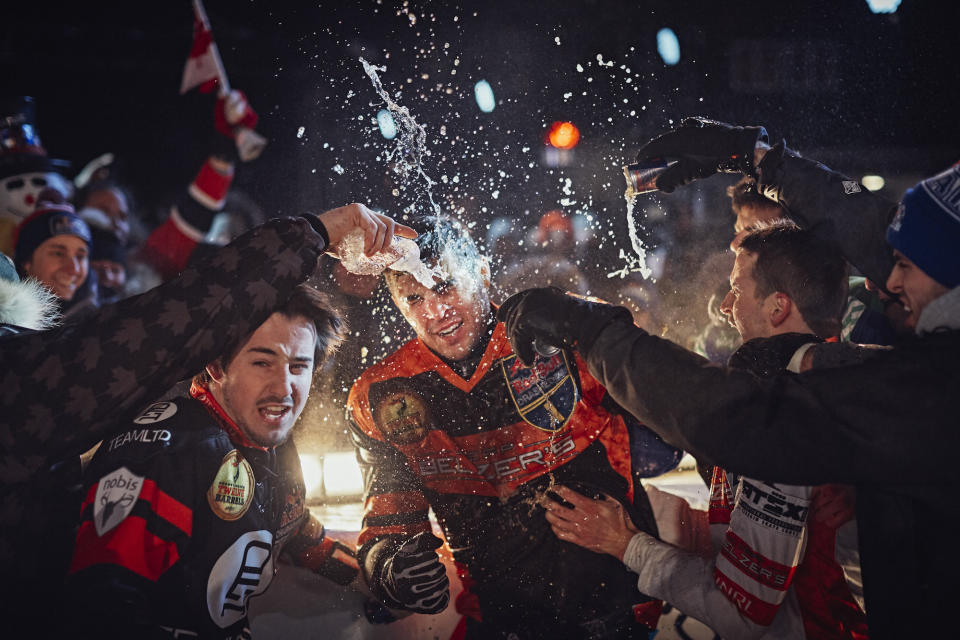
The sport's top competitor believes there's a wider future looming. Still wearing his skates and the orange jersey emblazoned with the logo of the Minnesota-based Chevy dealership that sponsors him, the newly victorious Naasz dreams of one day seeing ice cross downhill in the Olympics. It's far-fetched until you examine the sport's growth in the last decade and a half. Now televised, the sport introduced a women's division last year, and junior competitions in 2017. Independent organizations like the All Terrain Skate Cross Federation are steadily gaining recognition, and the athletes even organized so-called Riders Cup events in conjunction with ski resorts and other venues.
"It takes people that are motivated and dedicated to the sport to do it," Naasz says. "It's hard to find those people right now. They need a background in the sport as well. It needs to be guys like myself in a couple years, that have time on their hands, that aren't going to compete but are going to put on events."
He walks away, ready for a shower and a celebration. It's time for the after-party-brought to you by Red Bull.
You Might Also Like

